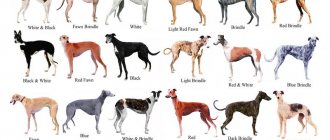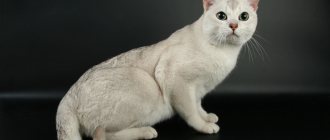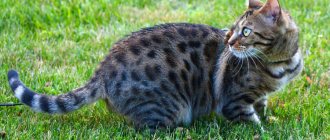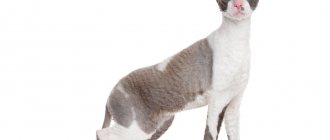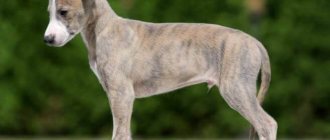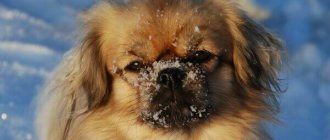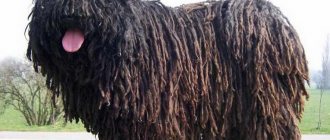Characteristics of herbivores
Representatives of the fauna that feed on plant foods are forced to drink a lot of water, so they choose a habitat near natural bodies of water. Herbivores are endowed with a complex stomach structure that digests vegetation. The teeth have a flat crown.
The muscles of mastication are powerful and help to grind tough foods. Herbivorous animals have excellent hearing and a good sense of smell, with the help of which they detect the presence of a predator in time.
Large representatives have strong legs with hooves that protect them when moving on hard and rocky terrain. With their help, they can fight off enemies.
Polar animals
Some species of animals have adapted to live in the region of permafrost, snowy deserts, and strong winds. In the harsh Arctic, they have to spend a difficult winter, get food and constantly fight for their existence.
Interesting: Why do pigeons nod their heads when walking? Reasons, photos and videos
Polar bear
Polar bear
A large mammal grows in length up to 2.5-3 m. The height at the withers of a polar bear reaches 1.5 m, weight - 800-1,000 kg. Natural habitats of animals have spread to the northern coasts of the continent and to the south of drifting ice floes. The predator has an excellent sense of smell, hearing and vision, which helps it detect potential prey from kilometers away. The diet includes baby animals, sea creatures, moss, and berries.
Penguin
Penguin
Flightless birds swim and dive well. The streamlined body grows up to 1.5 m and weighs 40 kg. The natural habitats of animals are expanses of water. Penguins happily eat fish, crustaceans, plankton, squid, anchovies, krill, and octopuses. During the hunt, animals make about a thousand dives, moreover, to a depth of 100 m.
Seal
Seal
Clumsy pinnipeds are large animals. Their weight can reach 2.5 tons, and their body length is 6.5 m. The habitats of seals are the coasts of oceans and seas. Animals are predators. The diet includes crayfish, crabs, fish, and shellfish. Despite the rookeries formed, seals prefer to rest and feed alone.
Small herbivores
This group is small. It includes hares, rabbits and rodents. They feed on the plants of the area where they live. The diet also includes small insects.
Herbivores live in the desert:
Antelope ground squirrel. Gophers are not afraid of the scorching sun; their bodies are adapted to the environment. During the daytime, they lose up to 15% of their liquid and go underground to cool. They compensate for the lack of fluid with green vegetation and morning dew.
Kangaroo jumper. It got its name from its ability to move by jumping. Water enters his body through vegetation during the processing process.
Black-tailed hare. Representatives of this species have upper incisors. Babies are born sighted and with fur. They prefer to hide near plant stems. On the surface of the earth the temperature is lower. A herbivore eats grass and green parts of plants. Does not disdain twigs, cacti and tree bark. Spends time searching for food. The need for plant food is great: he chews non-stop.
Rabbit. The steppe rabbit endures the heat while sitting in a hole. Uses the home of other animals. There are incisors on the upper jaw. Eats grains. This is his main diet. In addition to seeds, it feeds on grass, vegetables and cacti.
Animals of South America
A huge number of animal species live in the diverse climatic zones of South America. Various representatives of the fauna have adapted to live in the barren Atacama Desert and in the coastal areas of the Amazon, and in the highlands of the Andes, and in tropical forests.
Jaguar
Jaguar
A large mammal with an average weight of 60-90 kg, body length - 112-185 cm, tail - 45-75 cm, height at the withers - 63-76 cm. Jaguar habitats are different: mountain and tropical rain forests, ocean shores, grasslands , mountain slopes. The diet of a typical predator includes animals in the form of deer, anteaters, caimans, foxes, monkeys, etc. Jaguars also feed on fish, waterfowl, turtle eggs, and domestic cattle. Active hunting takes place at night.
Armadillo
Armadillo
An ancient mammal lives in various natural zones: deciduous and rain forests, savannas, high mountain areas, arid deserts. There are approximately 20 species of armadillos. Gigantic is the largest of them. Its length reaches 1.5 m, weight varies from 30 to 65 kg. The small armadillo grows up to 16 cm and weighs 80-100 g.
Otter
Otter
The South American otter has average sizes: weight - 5-14 kg, body length - 50-79 cm, tail - 37-57 cm. Animals choose lakes, rivers, swamps, as well as places near water bodies to live. Mammals are predators and are excellent swimmers and divers. Otters eat not only fish, crustaceans and mollusks, but also land animals, birds, and insects.
Interesting: The most dangerous animals in Russia - list, description, photos and videos
Mountain lion
Mountain lion
A large, powerful cat with a slender body, the length of which without a tail is 1.5-2.7 m. The male half of mammals can weigh up to 68 kg, the female half up to 45 kg. The animals' habitat is mountainous areas. Lions feed on animals: deer, hares, squirrels, raccoons, porcupines, etc. Thanks to their keen eyesight, they go hunting at dusk, at night or at dawn. Mountain lions are capable of jumping to a height of 6.1 m. Only an animal maddened by hunger can attack people.
Owl
Owl
The owl is unpretentious in its location and can settle in treetops, abandoned buildings, pastures, parks, fields and even open areas. Birds stay awake at night, getting food for themselves. Birds of prey eat birds, rodents, hares, rabbits, bats, marmots, squirrels and other small mammals. The average individual has a length of 43-64 cm, the wingspan varies from 91 to 153 cm. The average weight of the female is 1608 g, the male - 1224 g.
Large herbivores
Herbivores obtain water by eating vegetation. But this amount is not enough for herbivores, so they must drink regularly. This group is numerous.
Some of them:
Hippopotamus. It is also called a hippopotamus. This is a herbivore leading a semi-aquatic lifestyle. Possessing impressive size, it has no enemies. In hot weather, it takes refuge in the water, plunging headlong. At night it comes out to feed. The stomach is designed in such a way that it can digest dry grass.
Okapi. Belongs to giraffes. Like its relative, the giraffe eats leaves. The giraffe eats trees using its long tongue and lips. Thanks to its growth, it can reach foliage that is inaccessible to other herbivores. Okapi is much smaller than a giraffe. Its height is 1.70 m, length is 2.0 m, and its weight is 250 kg.
Elephant. The largest animal. With the help of its trunk, it lifts objects and reaches the leaves of trees. To saturate the body, the elephant has to spend a lot of time searching for food. Eats fruits, grass, tree bark and roots. It travels long distances to search for water. Like all large animals, it lives in a group and takes care of the babies of its family. Despite its size, it runs fast.
Lama. Belongs to the camel family. It has muscular limbs, with the help of which it develops high speed (up to 50 km). Eats dry grass, greens, foliage, branches. She has a beautiful coat that protects her from the heat and protects her from the cold in the highlands.
Zebra. Belongs to the horse family. The skin is a beautiful white and black striped color. It eats only grass. The zebra's body needs water, so it settles near a pond.
Deer. The majesty of the animal is given by its horns, the number of branches of which corresponds to its age. Unpretentious, eats grass and berries in summer; in autumn - tree fruits. In winter, it picks off branches and eats bark and moss.
Elk. The horns are shaped like a plow. That's why it's called the "stalky elk". He sees poorly, but has heightened hearing and picks up odors. This allows him to hear the predator in time. When it comes to food, it prefers grass, berries and bark. Like the deer, it eats chestnut and oak fruits. Habitat is near water bodies, as it drinks a lot.
Animals of Africa
Amazing and unusual representatives of the animal kingdom of Africa have attracted adventure lovers for centuries. The mainland is home to herbivores, predators and omnivores, some of which are listed in the Red Book.
African elephant
African elephant
African elephants are found throughout the continent, both in the tropical forests of Western and Central Africa and in the south of the Sahara. Animals adapt to any habitat, as long as it is easy to find food and water. They belong to the elephant family and are the largest mammals on earth.
Elephants are divided into two types: forest elephants with tusks pointing straight down, and savannah elephants with tusks turned outward. The first, darker, weighs approximately 5 tons, the second - 7-12. African elephants feed exclusively on plant foods. The animal's trunk allows it to lift weights of more than 200 kg.
Interesting fact : the length of the ears of an African elephant is about 2 m. With their help, animals escape from the heat - when they flap, their own body temperature effectively decreases.
Giraffe
Giraffe
Artiodactyl mammal belongs to the giraffe family. The animal is the tallest on the planet. Male giraffes weigh 900-1200 kg. Their height is 5.5 - 6.1 m, with one third occupied by a slender neck. Females are usually slightly shorter and lighter. The habitat of giraffes is closer to the south and southeast of the Sahara. Unusual animals live most in the woodlands and savannas of Southern and Eastern Africa. Giraffes eat vegetation, preferring acacia foliage.
Zebra
Zebra
Odd-toed ungulate mammals belong to the equine family. The zebra's body length is approximately 2 m, weight - maximum 360 kg. Striped animals are divided into types: savanna, desert, mountain. The first two types live in the steppes in the east of the continent and the southern regions of the continent. Few mountain ones are found in the highlands. Animals are herbivores. To satisfy the body with enough calories, zebras consume 5-7 kg of food per day.
a lion
Lion
Mammal, predator, representative of the panther genus and the cat family. Lions differ in appearance by gender. The largest are males. Their weight and body size depend on the subspecies of the animal. On average, the weight of a male is 180-220 kg, the body length is from 2.5 m excluding the tail, the height of the withers is 120-125 cm. African lions live south of the Sahara, namely in the west, northwest, east, south -east of the African continent. The favorite habitats of predators are savannas.
Interesting fact : the roar of a lion is very loud and terrifying. The roar reaches 115 decibels, is heard at a distance of up to 10 km, vibrations from it raise clouds of dust.
Rhinoceros
Rhinoceros
The rhinoceros is the second largest animal on the continent. Its weight is 1-3.6 tons, length – 2-5 m, height – 1-3 m. Thick-skinned mammals feed on vegetation, eating about 72 kg of grass and leaves per day. A distinctive feature of the animal is its horn, which consists of the protein carotene and can reach 158 cm. There are two types of rhinoceroses living in Africa: black and white.
Interesting fact : September 22 is officially about. It was founded by the World Wildlife Fund.
Hippopotamus
Hippos
or hippos are representatives of artiodactyls. They prefer to settle in herds on the banks of bodies of fresh water. Despite their terrifying appearance, mammals eat plant matter. The body length of an adult reaches 5 m without a tail, the height at the withers is about 1.5 m, and the weight is 1.2-3.2 tons. Hippos feed on plant foods and meat, eating up to 50 kg per day.
Interesting: How do horses sleep? Description, photo and video
Chimpanzee
Chimpanzees
live in almost all regions of Africa. The height of adult males is on average 170 cm, weight - 70 kg, females are correspondingly smaller. Chimpanzees are omnivores, and feed on both vegetation and bird eggs, honey, fish, and insects. They unite in groups, electing a leader who ensures that order and hierarchy are maintained.
Ostrich
Ostrich
The only representatives of the ratite family of flightless birds. The largest bird weighs on average 150 kg, height reaches 2.7 m. They prefer to live with zebras and antelopes and move in groups around the territory. Ostriches are capable of reaching speeds of up to 70 km/h, while the bird's step is approximately 4 m. They feed on small reptiles, plant food, and insects.
Herbivorous birds
According to the method of feeding, all birds are divided into several groups:
- herbivores;
- insectivores;
- predatory;
- aquatic (feeds on fish).
Representatives of the herbivorous fauna are numerous.
The diet includes:
- flower petals and their juice;
- tree sap;
- kidneys;
- stems and shoots of grass;
- young green branches;
- grain sprouts;
- leaves;
- seeds;
- fruit.
The greatest diversity of birds inhabits tropical forests: 85% of living birds. Only 15% live at other latitudes. The structure of the beak and tongue is designed in such a way that it is possible to feed optimally: pecking, drinking juice, picking leaves and grass.
In our latitudes there are sparrows, titmice, nightingales, woodpeckers, pigeons, crows, magpies, cranes, starlings, orioles, and bullfinches.
In steppe areas, herbivores contribute to the accelerated regrowth of grasses. Excrement replenishes the supply of beneficial bacteria in the soil, enriches its composition with microelements, and stimulates the growth of vegetation.
Herbivores or herbivores are animals that eat plant-based foods, including grass, fruits, leaves, roots, bulbs, vegetables, etc. The teeth of herbivores are adapted for grinding plant tissue. Although there are a few herbivores that occasionally eat meat, many do not have the ability to chew or digest animal products. Some herbivores prefer fruits and leaves in their diet, so they are often called frugivores and folivores, respectively.
The diets of herbivores vary depending on climate, geographic location, and time of year. In the animal world, herbivory has some advantages. Unlike carnivores, herbivores do not have to hunt for their food in order to consume it. However, some plants protect themselves from animals with thorns or poison.
Distinctive features of herbivores
- The elephant
is one of the largest herbivores, endowed with a long, sensitive trunk. With their trunks, elephants can grab the smallest objects on earth and get food from tall trees. Elephants have a variety of foods: tree roots, fruits, bark and grass. They eat a lot and hardly sleep. These animals walk long distances in order to get food. The enormous size of the elephant's body does not prevent it from walking quietly and running quickly. Their running speed can reach up to 30 km/h. Elephants are also very smart. - The hare is a small herbivore that is endowed with a forked upper lip, which makes it easier for it to easily obtain food. The hare feeds exclusively on grass, and in winter on bark and dry twigs from trees and bushes. Hares have very well developed hearing. This allows them to hear the footsteps of approaching predators. Hares also have well-developed hind legs. They can run very fast, reaching speeds of up to 50 km/h. The hare jumps high and far, and sharply changes direction in the air, which allows him to easily escape and hide from the predator.
- Llama
is an animal from the camel family. She looks like a deer, only without antlers. They feed on almost everything: leaves, grass, hay, twigs. Llamas have very strong and muscular legs. Therefore, they can reach speeds of more than 50 km/h, which allows them to easily escape from a predator. These animals also have good warm fur, which protects them from cold winds in winter and heat in summer. - Zebra is an animal from the horse family. They are distinguished by a beautiful color - black and white stripes. This color is individual for each zebra and is not repeated. They feed exclusively on grass. Their bodies also need plenty of water, so they live near bodies of water and often go to water. Zebras have large, muscular legs that allow them to run quickly and escape from predators.
- Deer
is a herbivore. Deer are distinguished by their branched antlers. The number of branches on the antlers indicates the age of the deer. These animals feed on all the gifts of nature. They are not picky about their diet. In summer they feed on soft grass and berries, in autumn on acorns and chestnuts, and in winter on tree bark and twigs. A deer has strong legs and great endurance, which allows it to quickly escape from a predator. - Moose are animals with beautiful antlers, shaped like a plow. They see poorly, but their hearing and sense of smell are well developed, which allows them to hear the approach of a predator. Moose eat, just like deer, grass, tree bark, berries, acorns and chestnuts. Moose drink a lot, so they live near bodies of water.
- The bison
is a cloven-hoofed herbivore. In appearance, he has a threatening appearance, although he is completely harmless. They feed on grass and tree bark, and bush twigs. Having fast, durable legs, they run easily and quickly, overcoming long distances and high obstacles. - The roe deer is a herbivore, a beautiful, graceful animal that feeds on grass, berries, acorns, and moss. They are very active and need a lot of water, so they live near bodies of water.
- Hamster
is a family of rodents. This is a very interesting animal. The hamster feeds mainly on grain from the fields. He puts the grain in his cheek pouches and carries it to his burrow. These rodents have well-developed clawed paws, which allow them to move quickly and deftly in space, running away from predators. - The vole mouse is also from the rodent family. The mouse is very dexterous. The front legs are very mobile, which allow them to quickly escape if danger threatens. These rodents feed on plant foods—grains, grass, berries, and nuts.
- A gorilla
from the family of herbivores, the largest ape on earth. It has long upper limbs and lower limbs with powerful feet. Massive jaws allow gorillas to eat hard food such as tree bark, twigs and roots of bushes, as well as soft, juicy grass and fruits. - Kangaroos are the most unusual herbivore because they have a pouch on their belly that looks like a bag, which is why they are called marsupials. The kangaroo carries its baby in this bag. Kangaroos have two long hind legs and two short front legs. They have highly developed hind legs, thanks to which they can jump very high and far. Kangaroos have well-developed hearing, which is important for wild habitats. They feed exclusively on plant foods.
Herbivores or herbivores are animals that eat plant-based foods, including grass, fruits, leaves, roots, bulbs, vegetables, etc. The teeth of herbivores are adapted for grinding plant tissue. Although there are a few herbivores that occasionally eat meat, many do not have the ability to chew or digest animal products. Some herbivores prefer fruits and leaves in their diet, so they are often called frugivores and folivores, respectively.
The diets of herbivores vary depending on the geographical location and time of year. In the animal world, herbivory has some advantages. Unlike , herbivores do not have to hunt for their food in order to consume it. However, some plants protect themselves from animals with thorns or poison.
What are the most common traits of herbivores?
Most herbivores live in groups or herds, meaning they are social. Such animals act as primary consumers in the food chain, which means that they are prey to carnivores. This is why their eyes are usually located on the sides of their heads. This allows you to see a potential threat approaching without turning your head. They also have a common tendency to get very scared and run fast.
Although there are many herbivores in the world, it may surprise you to know that some of them are huge, have a bad reputation and look like carnivores. In this article we will look at some examples of herbivores, mainly mammals, and their diet.
Beavers are large semi-aquatic rodents from the genus Castor that are primarily nocturnal. They are distributed throughout Eurasia and North America. Beavers are one of the largest rodents in the world; occupy second place after the capybara. They are famous for the construction of large dams. They are herbivores that primarily consume twigs, foliage and bark from birch, maple, alder, cherry, willow, aspen and coniferous trees.
Capybara
The capybara (Hydrochoerus hydrochaeris) is the world's largest rodent. It is a member of the genus Hydrochoerus, like the capybara. The guinea pig is closely related to the capybara, and its distant relatives include chinchillas, nutrias and agoutis. The capybara is a social species that lives in groups of 10 or 20 individuals around dense forests and savannas. They are native to South America and primarily feed on grass, fruits, aquatic plants and tree bark.
Camel
Members of the genus Camelus, camels are four-legged, artiodactyl mammals bearing distinctive fatty deposits on their backs known as humps. These animals are found in Asia and Africa. Camels were domesticated by humans because they are adapted to live in waterless and hot places, with significant differences in ambient temperature between day and night. Camels are herbivores; their main diet consists of saltwort, wormwood, camel thorn and saxaul.
Elephants are members of the elephant family (Elephantidae) and are native to Asia and sub-Saharan Africa. They are the only surviving members of the order Proboscidea, as other close relatives such as mammoths, mastodons and gomphotheres became extinct. There are three known species of elephants: the African forest elephant, the African savanna elephant and the Indian elephant. They are all herbivores that consume small plants, bushes, fruits, twigs, tree bark and roots.
Horse
The horse (Equus ferus caballus) is an odd-toed ungulate mammal belonging to the equidae family. Human domestication of horses began around 4000 BC, and became widespread by 3000 BC. Horses are herbivores and typically eat grass. However, domesticated horses are often fed oats, bran, barley and hay.
Giraffe
Giraffes are artiodactyl mammals from the genus (Giraffa). They are the tallest living land animals on the planet. The genus Giraffa has 6 species. Giraffes eat exclusively plant foods. Their long necks allow them to reach the branches, buds and leaves of acacia trees. Giraffes can eat large amounts of greens and go for weeks without drinking water because they get most of their moisture from the vegetation they consume.
What animals eat plants?
Green plants play a very important role in the life of animals. Let us draw your attention to the fact that they can carry out the process of photosynthesis. It plays an important role because during its implementation, the radiant energy of the sun, in interaction with simple chemical components of air and water, is transformed into complex elements that feed the plant. That is, they provide their own food. But animals don’t know how to do this.
They obtain the energy necessary for life by eating plants or animals that eat plants. Thus, without the plant world there would simply be no life on the planet. Most animals are herbivores.
What are herbivores?
Herbivores are animals that feed exclusively on food of plant origin: grass, leaves, branches and fruits of trees. The most famous herbivores are ungulates, such as horses, cows, goats, sheep, camels, roe deer, deer and so on. Hares, giraffes, koalas, pandas and the like also eat grass.
Such animals differ from each other in shape, size, color and speed of movement. But you can notice a lot of things in common in them, for example, slender, long and muscular legs with hooves that are perfectly adapted to rocky, hard surfaces. They also help animals easily cover long distances, hiding from attacking predators or looking for new pastures. Therefore, a characteristic feature of many herbivores are hooves.
The largest herbivore is the elephant. Its weight can be more than one ton. Some species of elephants weigh up to 5 tons. They consume large amounts of tree leaves and grass. For example, Indian elephants can spend up to 20 hours a day searching for food. But the amount of food that an elephant can absorb in a day ranges from 150 to 300 kg of various plant foods. In addition to tree leaves and grass, elephants can eat bark. They scrape it off with their molars, holding the branch with their trunk.
But the smallest herbivores are ungulates - antelopes, dwarf deer, horses, pigs and other animals.
Manatee
Manatees are large aquatic mammals that have egg-shaped heads, flippers, and a flat tail. They are also sometimes called "sea cows". Manatees are members of the genus Trichechus in the family Trichechidae. They live in shallow waters, including sea bays, canals and slow-moving rivers. Manatees tend to migrate. Like land cows, they follow a herbivorous diet that primarily consists of floating or submerged vegetation.
Big panda
The giant panda (Ailuropoda melanoleuca) is a mammal from the bear family (Ursidae) native to China. A panda is easily recognized by its large, distinctive black spots around its eyes, on its ears, and across its round body. Although this animal belongs to the order Carnivora, its diet consists of more than 99% bamboo. Giant pandas in the wild may sometimes eat other grasses, wild tubers, or even the meat of birds, rodents, or carrion.
Animals of North America
North America has several natural areas, so there are many different animal populations across the continent. Representatives of the fauna easily adapt to a wide variety of natural conditions: areas with high moisture, hot deserts, glaciers.
Raccoon
Raccoon Raccoon
This fluffy animal has a dense 70-centimeter body with a weight of 8-12 kg. Females weigh 3 times less. The owner of a fluffy tail prefers to live in mixed and deciduous forests, on plains and lowlands, often changing locations. The striped raccoon is an omnivorous mammal. The animal's diet includes muskrats, rabbits, frogs, turtles, hamsters, squirrels, and plant foods.
Brown bear
Brown bear
The brown bear is rightfully considered the master of the taiga. The strong mammal lives in the tundra, taiga, mountains, where there is dense green vegetation. The largest individuals can weigh up to 500 kg, the height at the withers is approximately 110 cm, the body length is about 2.5 m, the tail is approximately 15 cm. Despite the fact that the bear is a predator, it eats a lot of vegetation, about 70% of the total diet. Also on the animal's menu are fish, wild honey, berries, beetles, nuts, acorns, and cereals.
American alligator
American alligator
The average length of a male is 4-4.5 m, females no more than 3 m. American alligators live in freshwater bodies of water. Preference is given to standing water. Predators hunt mainly at night. Alligators eat fish, small mammals, turtles, and snakes. During the cold season, animals hibernate or become inactive.
Moose
American elk
A fairly large mammal, it can weigh more than 600 kg. The body length of an American moose is about 3 m, the height at the withers reaches 2.2 m. It belongs to the deer family. Habitat: cool coniferous forests. Elk is a herbivore, so it looks for pasture for food: moss, lichens, grasses, mushrooms, tree foliage.
Interesting fact : moose are big fans of salt. Animals lick stones and eat soil, which is enriched with the mineral.
Nine-banded armadillo
Nine-banded armadillo
Nine “belts” are visible on the animal’s body, which serve as reliable protection. Body weight on average is 6.5 kg, body length - 32-57 cm, tail - 21-45 cm. Animals live in a variety of places, both swampy and arid. Armadillos sleep during the day, and at night they forage for food, including insects, chicks, eggs, mushrooms, small mammals, and reptiles.
Interesting: Animals of the Red Book of Russia


